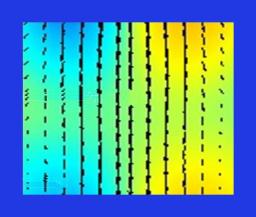Many situations encountered in daily life are what is called in physics “complex systems”: inherently scalable materials such as glasses and polymers, granular materials, chaotic or turbulent fluids, crack propagation in disordered materials and dynamic fracture, but also interacting animals or human in the society … All these systems have complex collective effects emerging from individual single rules.
Electrical networks with a large number of nodes, also fall into the category of complex systems. They include delocalized production sources and storage devices of intermittent renewable energy and a varying demand, with sometimes contradictory constraints. Nonlinearity questions, intermittent chaos specific to complex systems are then to be taken into account in the development of networks as part of the energy transition.
Understanding these phenomena, especially with statistical and nonlinear physics, is a major issue, for which the complementary experimental and theoretical approaches developed within IRAMIS are a decisive advantage. This complementarity allows deciphering the observed phenomena and brings understanding at the elementary scale (individual, microscopic or atomic) the processes that govern the evolution of the systems.



